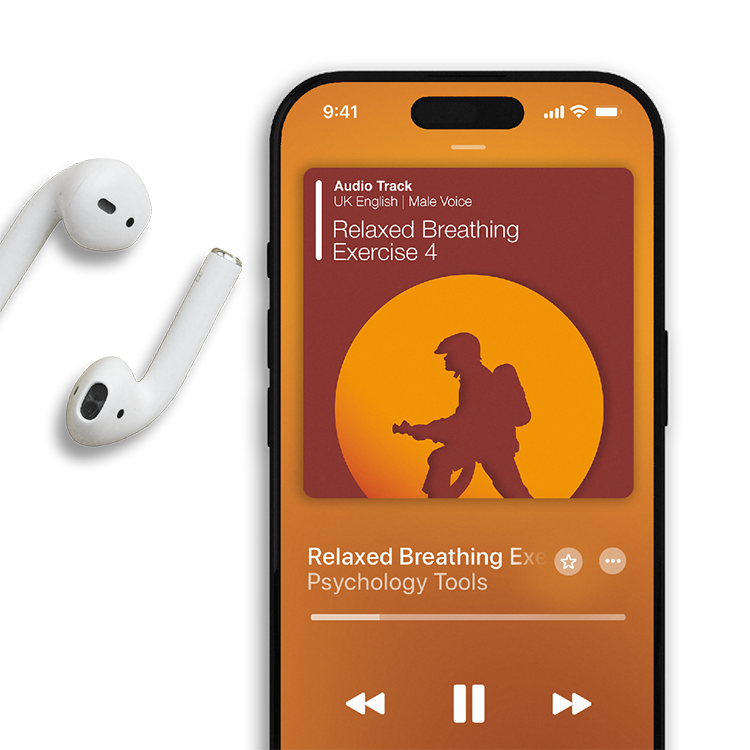Audio track (MP3)
A therapy audio track designed for skills development.
Audio script (PDF)
The script for a therapy audio track. Read along with an exercise, or record in your own voice.
Promote relaxation and grounding with this guided breathing exercise designed to enhance your breathing's depth, rhythm, and regularity. Taken from the Psychology Tools For Overcoming PTSD audio collection.

A therapy audio track designed for skills development.
To use this feature you must be signed in to an active account on the Advanced or Complete plans.
The script for a therapy audio track. Read along with an exercise, or record in your own voice.
To use this feature you must be signed in to an active account on the Advanced or Complete plans.

Post-traumatic stress disorder (PTSD) is a condition that develops in response to traumatic experiences, resulting in symptoms including such as flashbacks, hypervigilance, and a current sense of threat. The Psychology Tools For Overcoming PTSD Audio Collection offers a structured series of exercises designed to help clients manage these symptoms effectively.
Relaxed Breathing Exercise 4 is an audio script created to help clients achieve a state of relaxation by intentionally slowing and deepening their breathing. This technique sends calming signals from the body to the brain, reinforcing a sense of safety and tranquility. The exercise can be performed anywhere, offering flexibility and accessibility to clients in various settings.
Just enter your name and email address, and we'll send you Relaxed Breathing Exercise 4 (Audio) (English GB) straight to your inbox. You'll also receive occasional product update emails wth evidence-based tools, clinical resources, and the latest psychological research.
Working...
This site uses strictly necessary cookies to function. We do not use cookies for analytics, marketing, or tracking purposes. By clicking “OK”, you agree to the use of these essential cookies. Read our Cookie Policy